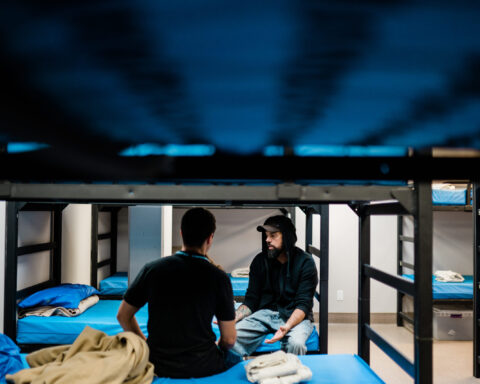To be the “last king” of anything means you left this world either a legend or a tragic figure. Maharajah Duleep Singh, the final monarch of the Punjab kingdom, who was forcibly separated from his family as a child, dispossessed of the Koh-i-noor diamond, converted to Christianity as a teenager, died a penniless, broken man in Paris, and is today buried in England, clearly falls into the latter category. But just as some within England’s Sikh community are seeking to exhume his remains for return to the Punjab, so are others working at rehabilitating his victim legacy.
Veteran U.K. actor and filmmaker Kavi Raz is one of these reformers. His film, The Black Prince, is a new production on the deposed monarch, who as an 11-year-old was removed from the throne and by 15 was exiled to England after his kingdom was annexed by the British in 1849. Unlike other ‘last kings’ such as Louis XVI of France and Nicholas II of Russia, Singh was spared the guillotine and firing squad, but the impressionable boy king would live out his life cut off from his family, culture, and homeland, remaining forever hidden away, if not lost, from his people.
Raz’s biopic sets course to rescue Duleep Singh from the forgotten recesses of English and Indian history. For the writer-director and his fellow producers, The Black Prince is clearly a passion project; the period piece is scripted in a mix of English and Punjabi, showcases an international cast, and features detail-oriented sets of Victorian England.
The film is not song-and-dance Bollywood, nor does it fall into the Punjabi-language genre which is bloated these days with slapstick comedies. Like the recent Oscar nominated Lion, The Black Prince is part of a new wave of film and television content capable of generating box office revenue domestically and internationally. In Canada, there are over one million Punjabi speaking South Asians who provide a niche target for the film.
Raz knows his target demographic well—he is originally from the Punjab region—and has crafted a story to win the hearts and minds of this audience. Unfortunately, this comes at an artistic cost, as The Black Prince seems more like a mission than a movie at times. Raz presses hard to recast Duleep Singh as a freedom fighter and a devotee of the Sikh faith, selectively omitting facts to make this case. The oversimplification of Duleep Singh’s re-initiation into the Sikh faith is one example of the film’s rolling-pin approach to the maharajah’s story (more on this pivot point below).
This heavy-handedness flattens characters throughout the movie, whether they be villainous English officers or the maharajah’s wives. Raz’s Duleep Singh is a stripped-down joyless version of an ex-sovereign, who was known to have thoroughly appreciated the velvet trappings of aristocratic life. We also see very little of a maharajah who took considerable pride in being a sportsman, playwright, and musician.
This ‘Black Prince’ who is constantly in a black mood is played by the eminent Punjabi musician Satinder Sartaaj who is forced to brood through his lines and awkward silences that ask too much of his acting skills. When he is not weighed down by a gnawing sense of displacement—the maharajah was, technically speaking, England’s first Sikh immigrant—he suffers from an identity crisis. That only intensifies when he finally reunites with his mother, Rani Jindan, superbly acted by Shabana Azmi.
These repetitive scenes of inner anguish neither advance the story nor reveal the complexity of a maharajah who, as a blue-blooded aristocrat, may have felt as much kinship with members of Europe’s ruling classes as with the average Punjabi peasant or Sikh devotee. The use of a third-person narrator would have relieved the maharajah from having to make banal political statements every other scene. Alternatively, Raz could have shot the film as a historical docu-drama interspersed with interviews to maximise his control over the narrative.
Eventually the maharajah’s contrived emotional distress culminates in a lukewarm climax when he re-converts to Sikhism during a failed passage to India—the British government denied him entry to travel to his homeland. Now near the end of his life, his unrest becomes outright rebellion as he bands with a group of Irish rebels and Russian agents and takes the helm of a quixotic, and ill-advised, plot to seize back his kingdom.
While there was likely some revolutionary fervor in the maharajah’s desire to overthrow English rule in India, it is a stretch to credit these actions solely to a pious freedom fighter, as Raz has suggested.
Historically there was also a financial motive—and a reasonably just one—behind Duleep Singh’s fall-out with his captors. Like many Victorian-era estate holders of his time, he was perpetually in debt due to a profligate lifestyle. His promised annual pension in 1860 of £40 thousand per annum ($7.7 million CAD in today’s terms) was always short-paid by half every year. While £20 thousand per year afforded him a luxurious lifestyle as single man, this amount, not indexed to the rate of inflation, became insufficient later in life as he became a father to eight children and husband to two wives.
At the time of Punjab’s annexation, the British government had also seized his family’s vast personal estates and holdings which should not have been included as state properties. Despite Singh’s ongoing campaigning to the Crown, these assets were never returned, much to his vexation.
Among Sikhs, there is a commonly held view that the modern downfall of their Punjab state actually began over 150 years ago when the kingdom created by Duleep’s father, the great Maharajah Ranjit Singh, crumbled after the Anglo-Sikh wars. A century after the golden age of the Lahore Darbar, Punjab was torn in half by Partition in 1947, and today what is left is being further shredded by rampant drug abuse, gross corruption, farmer suicides, and environmental damage.
Solutions remain elusive, but heroic accounts from the past provide hope that things can be better.
The Black Prince covers an important story that has long required production. While this movie pays tribute to the maharajah by rescuing him from the shadow of history, it does not, however, set him free. Over a century since his death, Duleep Singh still remains a pawn—now of modern-day Punjabi and Sikh identity politics—as he once was during the Great Game of colonialism in the 19th century.
Jagdeesh Mann is a media professional who works as the executive editor of the Asian Pacific Post. This article has been republished under arrangement with the South Asian Post.
Jagagdeesh Mann is a Vancouver-based entrepreneur and a founding partner of the Asian Pacific Post, a Jack Webster Award–winning publication. His work has been published by the Toronto Star, the Georgia Straight, the Globe and Mail, the CBC, and Canadaland.




